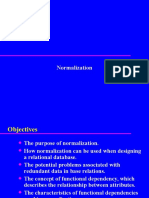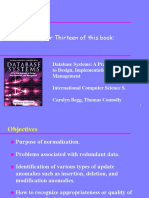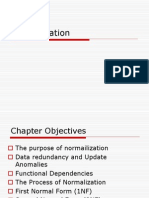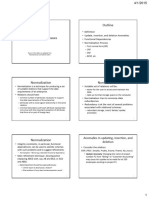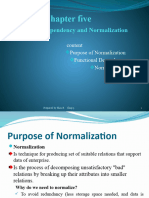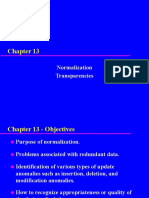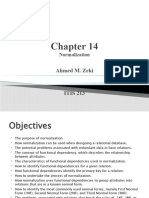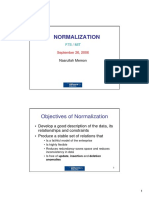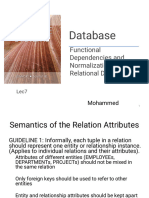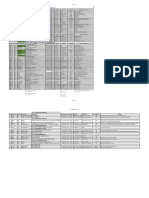0% found this document useful (0 votes)
20 views42 pagesL5 Normalization
The document discusses normalization and database design. It defines normalization as a technique for organizing data to minimize redundancy and update anomalies. The objectives are outlined as identifying functional dependencies and normal forms including 1NF, 2NF, and 3NF. Examples are provided to demonstrate functional dependencies, primary keys, and the process of normalization from unnormalized form to first, second, and third normal form.
Uploaded by
kamyar12345kCopyright
© © All Rights Reserved
We take content rights seriously. If you suspect this is your content, claim it here.
Available Formats
Download as PDF, TXT or read online on Scribd
0% found this document useful (0 votes)
20 views42 pagesL5 Normalization
The document discusses normalization and database design. It defines normalization as a technique for organizing data to minimize redundancy and update anomalies. The objectives are outlined as identifying functional dependencies and normal forms including 1NF, 2NF, and 3NF. Examples are provided to demonstrate functional dependencies, primary keys, and the process of normalization from unnormalized form to first, second, and third normal form.
Uploaded by
kamyar12345kCopyright
© © All Rights Reserved
We take content rights seriously. If you suspect this is your content, claim it here.
Available Formats
Download as PDF, TXT or read online on Scribd
/ 42
